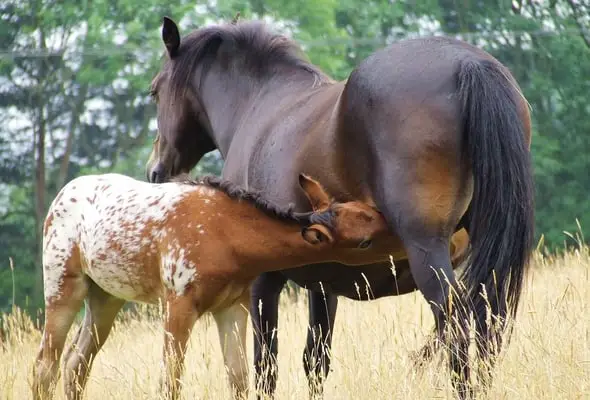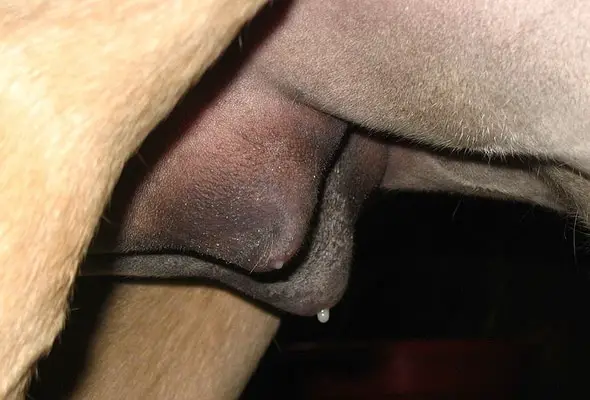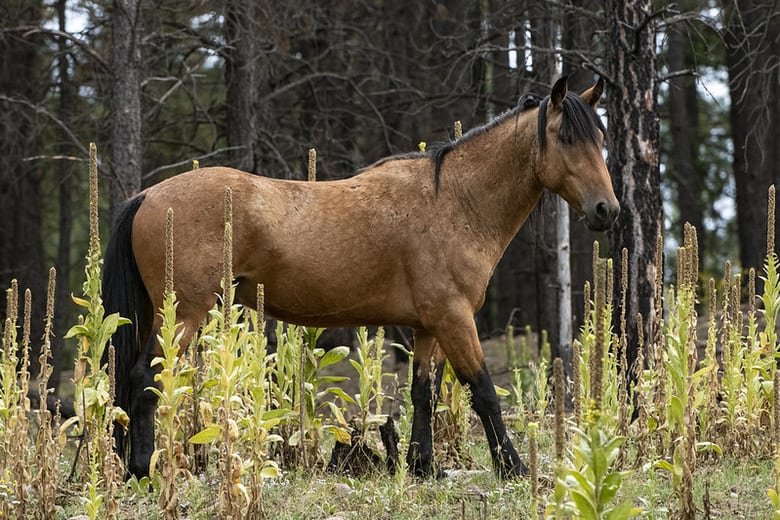An udder is a baglike organ containing the mammary glands, characteristic of certain female animals. They typically have two or more teats and hang between the hind legs. Humans have grown accustomed to the practice of milking particular animals, namely goats and cows, but there are others whose udders are more mysterious to us.
For instance, do horses have udders? Since most Americans probably can’t imagine racing to the store for horse milk, the answer to this question may be somewhat surprising.
Do Horses Have Udders?
Contrary to what some may assume, horses do have udders. They also produce milk that is not only safe for human consumption, but is said to be sweeter than the milk of a cow.
However, the physical composition of horse’s udders make them a challenge to milk, and is the primary reason horse milk is not more commonly consumed among the human population.
There are some differences between the udders of a horse and the udders of a cow. A cow possesses one udder which bears four teats. Horses have two udders with one teat on each. Moreover, a cow’s udder comprises four mammary glands, while a horse’s udder contains only two.
Where Are Horse Udders Located?
The udders of a horse are located between its hind legs. In a mare that has never been pregnant, the udder might be practically indistinguishable aside from the teats. With pregnancy, the udders of a mare begin to protrude.
Although the udder of a mare is relatively small in size, due to its well-developed glandular tissue, it is capable of producing just as much milk as the udder of a cow.
Between four and six weeks prior to foaling, a mare’s udder grows considerably as her body produces milk. Two weeks prior to foaling, a mares udder will swell up to the size of a melon. In the case of a first pregnancy however, it is quite common for a mares udder to remain relatively small.
What Are Horse Nipples Called?
A horse’s nipple is called a teat. A teat is a projection from the mammary glands of mammals from which milk flows or is emitted. The udders of a mare are protected by a layer of skin and hair that covers the whole surface of the glands. When it comes to the teats however, the skin is hairless and especially sensitive in order to keep the mother attuned to the suckling habits of her foal.

The unique nature of a horse’s teat means that the holes in the tip of each teat do not always point in the same direction. This presents a definite challenge during the milking process.
Teats can also be a signifier of horse health. A diligent horse owner must also be aware of a syndrome called ‘mastitis’ which can emerge in mares who have been feeding a foal or recently weaned a foal. The signs for mastitis include swollen mammary glands and blood-tinged discharge excreting from the opening of the teats.
Can You Milk a Horse?
You can milk a horse, but there is a practical reason why horse milk consumption is not as widespread as that of cow’s milk. Horse’s teats are much smaller than those found on cows, and each teat contains two small holes at the tip. A cow’s teat is comparatively large, making it easier to milk and to judge the direction the milk will excrete from.
In addition, horses produce only as much milk as their offspring require, whereas dairy cows are purposefully bred to produce large amounts of milk for human consumption.
Horse milk has been extolled for its health benefits. It has been found to include Vitamin A, B-family vitamins, Vitamin C, and Vitamin E as well as potassium, iron, calcium, and magnesium.
Many European countries enjoy the benefits of mare milk, as it is known, and it is considered a delicacy in Mongolia. Fans of horse milk as a beverage say it has a sweet, nutty flavor. Although many may be curious, the difficulty of horse milk acquisition has contributed to its rarity.
Why Are My Mares’ Udders Swollen?
Abnormalities in the udder can signify serious health issues. Acute mastitis is a severe infection of the mammary gland that occurs most frequently after weaning. It can be life-threatening if left unchecked.

In a case of acute mastitis, the udder might be enlarged or tight and painful to the point of the mare becoming incapacitated. Another serious sign of mastitis in a mare is a sudden reluctance to let a foal nurse.
Mastitis requires swift treatment to ensure the long-term health of the horse and their future reproductive capacity. Treatments can encompass antibiotics and anti-inflammatories.
Prevention is always better than cure, and experts recommend regular exercise and close monitoring of weaning mares to ensure that mastitis doesn’t have a chance to take hold.
Appropriate cleaning of a mares’ udders can also prevent them from developing health issues in general. The skin around a mare’s mammary glands produces a sebaceous substance that protects the delicate skin teats from the rigors of nursing foals as well as from chafing.
However, the waxy and sticky buildup can accumulate and cause irritation and unpleasant odors. As over-washing can stimulate an overproduction of this substance, horse owners need to find a balance.
Many horse enthusiasts swear by giving the udder a gentle wash with Dawn dish soap two to four times a year.
Conclusion
It may come as a revelation to many readers of this article that horses have udders. As you are now able to understand, the udders of a horse differ significantly from those of a cow.
Even though horse milk is perfectly safe for humans to consume, and even considered a delicacy in some parts of the world, it is far more challenging to milk a mare than a cow.
It is also far less sustainable, as mares only produce the amount of milk needed to sustain their own offspring, and it would be immensely taxing on a mare’s body to attempt to milk more than is strictly necessary. In addition, the udders of horses require particular and specialized care, and are highly sensitive.

